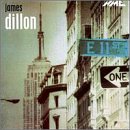| All Artists: James [1] Dillon, Richard Bernas Title: James Dillon: East 11 Street 10003 NYC Members Wishing: 0 Total Copies: 0 Label: Nmc Records Release Date: 9/15/2000 Album Type: Import Genres: Special Interest, Classical Styles: Chamber Music, Historical Periods, Classical (c.1770-1830) Number of Discs: 1 SwapaCD Credits: 1 UPC: 789368778522 |
Search - James [1] Dillon, Richard Bernas :: James Dillon: East 11 Street 10003 NYC
 | James [1] Dillon, Richard Bernas James Dillon: East 11 Street 10003 NYC Genres: Special Interest, Classical
|
Larger Image |
CD Details |
CD ReviewsChamber music ??an ongoing challenge scarecrow | Chicago, Illinois United States | 07/30/2001 (5 out of 5 stars) "music for small ensemble, some call it chamber music for orchestra has been a well preserved/reserved situation inhabiting a richness of conceptual challenge that composers can explore. Chamber works of the avant-garde, (a relative label and an inadequete one) has from its inception seems never to have abandoned the conceptual seduction,a temptuousness genre of its inherent complexity,timbral technical and conceptual. One only need to simply ponder the early masterworks in this genre,as Stockhausen's Kontrapunkt, or Kreuzspiel,or Boulez's Le Marteau sans Maitre, Berio's Circles,or Nono's Canto sospeso. Dillon here seems to find his own voice in this difficult genre, for if you step too hastily or with too much arrogance of your supposed composer technical skills, this ensemble genre can bury you forever,cast you into oblivion, an outcast renegade of mediocrity. Dillon's 'East 11th St. NY' (1982) is for six percussionists, and obviously Edgar Varese's 'Ionization'hovers in the flux and comes readily to mind. Dillon here to circumvent this, (whether he thought of that or not)and proceeds to create these massive richly diverse sheets of percussion sound, largily with the aid of rolls on metal instruments as tam-tam, gong, various sized cymbals,and chimes. Chimes seems to stick out awkardly at times,and perhaps it is a timbre which strikes him personally of his native Scotland. The liner notes reveal the work's premise as an exchange and contrast of percussive timbre. A simple premise, yet one filled with treacherous associations and obvious manipulations, predictable on hearing. Dillon who had studied linguistics here seems to know the durational longevity of his materials, and doesn't overtax their frames,allowing the unique percussive timbre to be heard. Much of the work comes across as a giant behemoth wind chime, flowly quietly at times, other times violently as the indeterminate wind kicks it to and fro. Dillon has worked within the realm of electronic means, and you sense this in his 'Windows and Canopies'(1985) here, Although written for a modest Haydnesque like chamber grouping, the timbres are very much electronic in their mixtures or effect. Again we find pure textures of micropolyephony, dense filigrees, yet light, nothing overwhelmingly heavy, 2 Flutes,2 Oboes, Bassoon,2 Horns,one percussionist with 7 Violins, 2 Violas, 2 Violoncellos,and a Contrabass, Wind players doubling upwards or downwards as the Contrabassoon, which works very well here. Dillon knows how to work magical charms, his music is deeply evocative and image building. His 'La femme invisible' (1989) after Salvador Dali has a bit of a comedic sense. Freely tossed trills, and tremoli and anxiety-ridden linear materials. Dillon summons the French occult philosopher Nicolas Flamel for some conceptual impetus, that of "rivers" flowing, emanating, rushing,spiraling, timbral landscapes disappearing as quickly as they assert themselves.Again Dillon favors a deeply classical instrumentation with double winds,three percussion and piano." Beautiful palate of sound klangfarbenguy | 10/29/2004 (4 out of 5 stars) "James Dillon's music can be described as a blend of the New Complexity and Spectralism. Despite the dense bundles of notes that characterize Dillon's works, he is always concerned with the sound color that is produced by them. He seems, like Spectralists Tristan Murail and Gerard Grisey, to be preoccupied with the nature of sound itself -- its physical properties -- and allowing that influence to guide the composition.
"La Femme Invisible" is a feast of spinning, twittering notes that are generated by sonorous bell sounds. Something like the fall leaves swirling in the wind, the colors that Dillon generates are downright sumptuous. The sections of this piece (and all of the work on this disc, for that matter) proceed by defining themselves in terms of density of activity. The bells mark out different sections, usually separated by a pause. This might seem simple, but the clarity of expression is necessary for the complex blending of instruments within the sections. A gorgeous piece. "Windows and Canopies" is even more complex, alternating thickets of swarming sounds (the "Canopies") with fairly transparent sections (the "Windows"). Plenty of unusual timbres are used and it is amazing that the orchestra here is about the same size as Mozart's. The only disappointment on the disc is "East 11th Street." The piece goes on too long without enough differentiation in the piece. Working with the more limited sound color world of the percussion, Dillon seems to not have as many ideas as in the other exciting works on the disc. The performances are very good and the "La Femme Invisible" and "Windows and Canopies" recommend this recording highly. " |

 Track Listings (3) - Disc #1
Track Listings (3) - Disc #1